Cholecystitis and pancreatitis are two separate conditions, but they can have overlapping symptoms. But first let’s find out what the gallbladder and pancreas are.
Gallbladder stones
The gallbladder is a small organ located in the upper right side of the abdomen, just below the liver. Its main function is to store and concentrate bile, a liquid produced by the liver that aids in the digestion of fats. When you eat, your gallbladder releases bile into your small intestine through a duct called the common bile duct. Bile helps break down fats so they can be absorbed by the body.
Gallbladder disease is a condition in which there is inflammation, infection, or other problems in the gallbladder. Gallbladder stones, which are hard deposits that can form in the gallbladder, are a common cause of gallbladder disease. Other conditions that can affect the gallbladder include cholecystitis (inflammation of the gallbladder), biliary dyskinesia (a disorder affecting the movement of bile), and gallbladder cancer (a rare but serious condition).
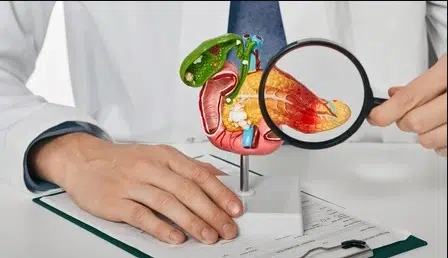
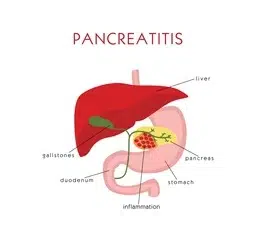
Pancreas
Pancreatitis is a condition in which there is inflammation of the pancreas, a gland located behind the stomach that produces enzymes to aid in digestion and hormones to regulate blood sugar levels. There are two types of pancreatitis: acute pancreatitis that comes on suddenly and usually goes away within a few days, and chronic pancreatitis, which is a long-term condition that can cause permanent damage to the pancreas.
The most common cause of acute pancreatitis is gallstones, which can block the pancreatic duct and cause digestive enzymes to get trapped in the pancreas, causing inflammation. Other causes of acute pancreatitis include heavy alcohol use, high levels of triglycerides in the blood, certain medications, infections, and trauma to the abdomen.
So the symptoms of gallbladder and pancreatitis differ, but some symptoms can be similar between them. Here are some common symptoms specific to both of these conditions:
Gallbladder stone symptoms:
- Pain in the middle of the abdomen or pain in the upper right radiating to back and shoulder.
- Nausea or vomiting.
- Fever or chills.
- Jaundice (yellowing of the skin and whites of the eyes).
- Bloating or flatulence.
- Indigestion or heartburn.
- Diarrhea or constipation.
Pancreas symptoms in pancreatitis :
- Pain in the upper abdomen may extend to back pain.
- Nausea or vomiting.
- Fever or chills.
- Fast heartbeat.
- Swelling or pain in the abdomen.
- Jaundice (yellowing of the skin and whites of the eyes).
- Rapid breathing.
- Low blood pressure.
It is important to note that not everyone with gallbladder or pancreatitis will experience all of these symptoms, and the severity of symptoms can vary from person to person. If you are experiencing any of these symptoms, it is important to see a healthcare provider urgently for an accurate diagnosis and appropriate treatment.

How do I know that the pancreas is inflamed?
It can be difficult to diagnose pancreatitis based on symptoms alone, as many of the symptoms are common to other conditions as well.
However, if you have any of the above symptoms, it is important to visit your doctor as soon as possible to get an accurate diagnosis.
How do I know that the gallbladder inflamed?
Cholecystitis can cause a range of symptoms similar to the pancreatitis mentioned above. If you are experiencing any of these symptoms, it is important that you see your healthcare provider for an accurate diagnosis and appropriate treatment as soon as possible.
Treatment for cholecystitis may include medications, changes in diet, or surgery to remove the gallbladder. Your healthcare provider may order blood tests, imaging tests such as an ultrasound, CT scan, or other tests to diagnose cholecystitis and determine the underlying cause.

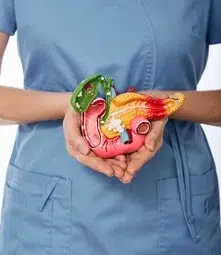
Does cholecystitis affect the pancreas?
Cholecystitis can sometimes affect the pancreas, especially if the inflammation is severe or if there are complications such as gallstones blocking the common bile duct. In some cases, gallstones can lead to acute pancreatitis, that is an inflammation of the pancreas.
This can happen if gallstones block the pancreatic duct, preventing digestive enzymes produced by the pancreas from reaching the small intestine. As a result, enzymes can build up in the pancreas and cause inflammation. It is important to see your doctor as soon as possible, as pancreatitis can lead to a serious condition. Treatment for pancreatitis may include hospitalization, fasting, and treatment of the underlying cause.
Does pancreatitis appear on ultrasound?
Yes, pancreatitis may show up on an ultrasound, but it depends on the severity of the pancreatitis and the location of the inflammation within the pancreas. In some cases, doctors can see visible changes in the pancreas using ultrasound, such as swelling, fluid around the pancreas, cyst formation, and presence of dead areas inside the pancreas (necrosis).
It is worth noting that there are more accurate investigations than ultrasound like magnetic resonance imaging (MRI) or computer tomography (CT).
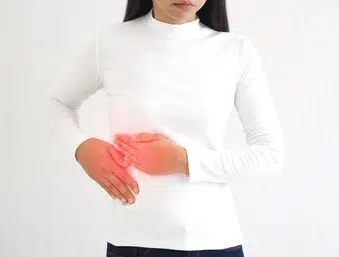
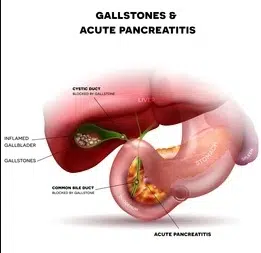
Treatment of cholecystis and pancreatitis
Treatment of cholecystitis and pancreatitis can vary depending on the severity of the condition and the underlying cause. However, some general treatments may include:
- Pain killers: Pain relief is an important aspect of treating cholecystitis and pancreatitis. Pain killers may be prescribed to control the pain, and in some cases, intravenous fluids may be given to prevent dehydration.
- Antibiotics: Antibiotics may be prescribed to treat any infection that may develop in pancreatitis or to treat infection in the case of cholecystitis.
- Fasting and rest: The patient may be advised to rest and avoid eating or drinking for a period of time to allow the pancreas and gallbladder to rest and heal.
- Lifestyle changes: Changes to an individual’s diet, such as avoiding fatty food, may be recommended to help reduce the risk of recurrence.
Gallbladder removal surgery
In some cases, surgery may be needed to remove the gallbladder or to drain any fluid that has accumulated around the pancreas. This can be done through key-hole surgery and the patient can be discharged on same day of operation.
It is very important to note that the treatment of gallbladder stones and pancreatitis should be individualized, and the appropriate treatment plan should be determined by a qualified healthcare provider based on the patient’s particular condition and medical history. And if you are looking for the best doctor for gallbladder stones causing cholecystitis and pancreatitis in Dubai, Dr. Antonio Privitera is one of the most expert gallbladder surgeon and deals with complex cases of pancreatitis.
